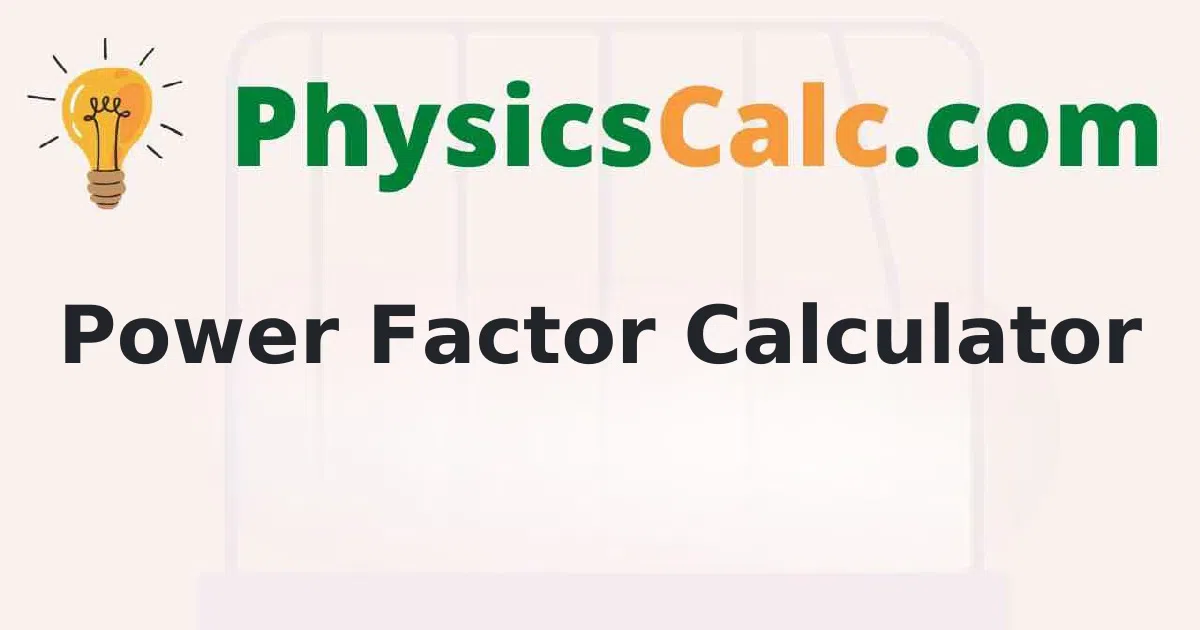Power Factor Calculator
Power Factor Calculator computes the power factor and analyses the altering current flow in the electrical circuit. Just enter inputs such as real power, current and reactive power details to get the power factor, apparent power, resistance as the output in a short span of time.
Step by Step Process to Find Power Factor
Below provided are the simple steps to calculate the power factor in a circuit. Go through these guiding principles and rules to find the result in a fraction of seconds.
- Find current, power triangle true power and reactive power.
- Get the sum of squares of true power and reactive power.
- Apply square root to the sum to get the apparent power.
- Divide true power by apparent power to check the power factor.
- Divide true power by square of current to obtain the resistance value.
Power Triangle | Power Factor Formula
Before learning about the power factor, you need to get an idea about the terms like true power, reactive power, apparent power, and power triangle.
Real Power: It is also called real power or active power. Only this power appears in the DC circuit and it performs real work in an electrical circuit.
Reactive Power: It is transferred if the current and voltage are 90 degrees out of phase. It never appears in DC circuits.
Apparent Power: It is the combination of real and reactive power. The product of RMS of voltage and current in the circuit is apparent power.
The graphical representation of these three powers in the form of a triangle is called the power triangle. Real power represents the adjacent side, reactive power is the opposite side and apparent power is the hypotenuse of the triangle.

By using the Pythagorean theorem,
S² = P² + Q²
Power Factor:
It is the ratio of real power and apparent power. If there is no reactive power in the circuit, then the power factor is 1.
The power factor formula is mentioned here:
power factor = P/S
P/S = cosφ
So, power factor = cosφ
The formulas to compute the resistance, reactance and impedance are along the lines:
P = I²R
Q = I²X
S = I²Z
Z² = R² + X²
Where,
P is the real power
Q is the reactive power
S is the apparent power
φ is the phase angle
R is resistance
X is reactance
I is current
Z is impedance
Example
Question: If 10 A of electric current is flowing through the circuit and its real power is 125 W, and reactive power is 92 VAR, find its power factor, resistance, impedance?
Solution:
Given that
Current I = 10 A
Real Power P = 125 W
Reactive Power Q = 92 VAR
Apparent Power S² = P² + Q²
S² = 125² + 92²
S = 155.2 VA
Power Factor = P/S
= 125/155.2
= 0.8054
power factor = cos φ
0.8054 = cosφ
So, φ = 36.65 degrees
Resistance R = P/I²
= 125/10²
= 1.25
Reactance X = Q/I²
= 92/10²
= 0.92
Impedance Z = S/I²
= 155.2/10²
= 1.552
Therefore, power factor is 0.8054, resistance is 1.25Ω, reactance is 0.92Ω, impedance is 1.552Ω, phase angle is 36.35 degrees.
Physicscalc.Com has various physics calculators at one place. Have a look at them and use the online calculators to find the accurate results quickly
Frequently Asked Questions on Power Factor Calculator
1. How to calculate the power factor on a calculator?
You have to provide current, true power, and reactive power details in the input fields of the Power Factor Calculator and hit the calculate button to check power factor, resistance, phase angle, apparent power and other details in the output section.
2. What is the power triangle?
The power triangle is a right-angled triangle having reactive power as the opposite side, real power as the adjacent side and apparent power as the hypotenuse.
3. What is the power factor formula?
The power factor is the ratio of real power to the apparent power in a circuit. The power factor formula is power factor = P/S.
4. Is the power factor good or bad?
The high power factor benefits the customer and utility while the low power factor means poor utilization of electrical power.
